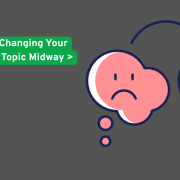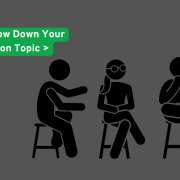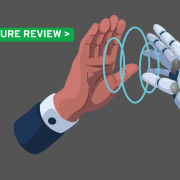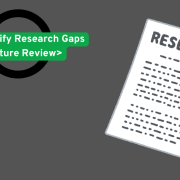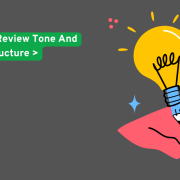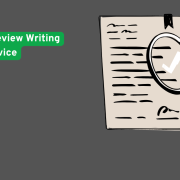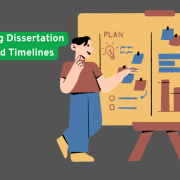Changing Dissertation Topic Midway: A Complete Guide to Making the Right Decision
Writing a dissertation is one of the most challenging academic endeavors, and choosing the right topic is crucial for success. However, many students find themselves contemplating changing their dissertation topic midway through their research journey. This comprehensive guide explores the complexities of changing dissertation topics, helping you understand when it’s beneficial and how to navigate this significant decision effectively.
What Does It Mean to Change a Topic Midway?
Changing a dissertation topic midway refers to the decision to shift your research focus, methodology, or subject matter after you’ve already begun substantial work on your original topic. This change can range from minor adjustments to your research questions to complete overhauls of your entire dissertation framework.
This situation commonly occurs across various academic and professional contexts, including doctoral dissertations, master’s thesis projects, research papers, academic presentations, and even professional research initiatives. Understanding the implications of such changes is essential for making informed decisions that can impact your academic timeline, research quality, and overall success.
The decision to change dissertation topics is more common than many students realize, with studies suggesting that approximately 30-40% of graduate students make significant modifications to their research focus during their program. This statistic highlights the importance of understanding both the benefits and challenges associated with topic changes.
Common Reasons Why Students Change Dissertation Topics
New Information and Discoveries
Research is an evolving process, and new information can significantly impact your original dissertation topic. You might discover groundbreaking studies that contradict your initial assumptions, find that your research questions have already been extensively covered, or encounter new methodologies that could enhance your work. These discoveries can prompt a reassessment of your research direction.
Scope and Relevance Issues
Many students realize their original topic is too broad, too narrow, or lacks relevance to current academic discourse. A topic that seemed perfect initially might prove difficult to research due to limited available data, lack of access to subjects, or insufficient scholarly resources. Conversely, what appeared to be a focused topic might expand beyond manageable boundaries.
Changing Academic Interests
Personal interest and motivation are crucial drivers of successful dissertation completion. Your academic interests may evolve as you delve deeper into your field, encounter new theoretical frameworks, or develop different research passions. This natural evolution can lead to a desire to pursue more engaging and personally meaningful research topics.
Supervisor Guidance and Feedback
Your dissertation advisor or committee members might suggest topic modifications based on their expertise and understanding of current academic trends. Their guidance can help identify potential issues with your original topic or suggest more promising research directions that align better with departmental strengths and funding opportunities.
Practical Constraints and Accessibility
Sometimes, practical considerations force topic changes. You might encounter difficulties accessing research subjects, obtaining necessary data, securing funding, or meeting ethical approval requirements. These constraints can make your original dissertation topic unfeasible within your program’s timeframe.
Implications of Changing Dissertation Topic
Time and Resource Investment Loss
One of the most significant drawbacks of changing dissertation topics is the potential loss of time and resources already invested in your original research. Literature reviews, data collection, preliminary analyses, and theoretical framework development might become partially or entirely unusable, setting back your timeline considerably.
Confusion and Coherence Issues
Changing topics midway can create confusion about your research trajectory and academic identity. This confusion might affect your ability to present a coherent narrative about your expertise and research contributions, potentially impacting job applications, conference presentations, and future research opportunities.
Credibility and Preparedness Concerns
Frequent topic changes might raise questions about your research planning abilities, commitment, or decision-making skills. While one significant change is generally acceptable, multiple changes can impact how supervisors, committee members, and peers perceive your research capabilities.
Extended Timeline and Funding Implications
Topic changes often extend your dissertation timeline, which can have financial implications if you’re receiving funding tied to specific completion dates. Extended timelines might also affect teaching assistantship opportunities, fellowship eligibility, or personal financial planning.
Relationship and Communication Challenges
Changing dissertation topics requires careful communication with supervisors, committee members, and potentially funding bodies. These conversations can be challenging and might strain relationships if not handled professionally and transparently.
Advantages of Changing Your Dissertation Topic
Enhanced Flexibility and Adaptability
Changing dissertation topics demonstrates your ability to adapt to new information and evolving circumstances. This flexibility can lead to more robust research that incorporates current developments in your field. Academic research benefits from adaptability, and supervisors often appreciate students who can pivot when necessary.
Improved Relevance and Engagement
A new topic might offer greater relevance to current academic discussions, policy debates, or practical applications. This increased relevance can enhance the impact of your research and make it more attractive to potential employers, publishers, or funding bodies. Additionally, a topic that genuinely interests you will likely result in higher-quality work and greater personal satisfaction.
Better Alignment with Career Goals
As your understanding of your field deepens, you might realize that a different dissertation topic would better support your career aspirations. Whether you’re planning an academic career, entering industry, or pursuing policy work, aligning your dissertation research with your professional goals can provide valuable expertise and networking opportunities.
Opportunity for Innovation
Changing topics can open doors to more innovative research approaches, interdisciplinary collaboration, or emerging areas of study. This innovation potential can distinguish your work in a competitive academic landscape and contribute meaningful insights to your field.
Quality Improvement
Sometimes, changing dissertation topics leads to fundamentally better research. You might discover methodological approaches that suit your skills better, find research questions that are more answerable within your timeframe, or identify topics with stronger theoretical foundations.
Strategic Tips for Effectively Changing Dissertation Topics
Thorough Evaluation and Planning
Before making any changes, conduct a comprehensive evaluation of your reasons for wanting to change topics. Create a detailed comparison between your current topic and potential alternatives, considering factors like feasibility, timeline, resource requirements, and alignment with your goals. This evaluation should include realistic assessments of what work can be salvaged and what must be redone.
Clear Communication with Stakeholders
Maintain transparent communication with your supervisor, committee members, and anyone else invested in your research. Present your rationale clearly, demonstrate that you’ve thought through the implications, and be prepared to address concerns about timeline, feasibility, and resource allocation. This communication should happen early in your decision-making process, not after you’ve already begun working on a new topic.
Understanding the Scope of Change
Determine whether you need to change everything or just specific aspects of your research. Dissertation topics typically include three key elements: people (research subjects), issues (research questions), and context (setting or framework). Understanding which elements need modification can help you minimize the disruption and maximize the utility of your existing work.
Smooth Transition Planning
Develop a detailed transition plan that addresses timeline adjustments, resource reallocation, and work redistribution. This plan should identify which aspects of your previous work can be incorporated into your new topic and establish clear milestones for your revised research schedule.
Risk Assessment and Mitigation
Identify potential risks associated with your topic change and develop mitigation strategies. These risks might include timeline delays, funding complications, supervisor disagreements, or methodological challenges. Having contingency plans demonstrates professionalism and increases your chances of successful topic transition.
Real-World Examples and Case Studies
Academic Writing Scenario: Adapting to Preliminary Results
Consider a doctoral student initially researching traditional teaching methods in elementary education. After conducting preliminary interviews, they discovered that their participants were more interested in discussing technology integration challenges. Rather than forcing the original framework, the student successfully pivoted to examine digital literacy barriers in elementary education, ultimately producing more impactful research that contributed to policy discussions about educational technology funding.
Presentation Context: Audience-Driven Adjustments
During a dissertation defense presentation, a student presenting research on rural healthcare access realized their committee was particularly interested in the telemedicine aspects of their work. By acknowledging this interest and adjusting their presentation focus, they were able to engage more effectively with their audience and receive valuable feedback that strengthened their final dissertation.
Research Project Evolution: Methodological Discoveries
A graduate student originally planned to conduct a quantitative analysis of social media usage patterns but discovered during their literature review that qualitative methods would better address their research questions. By switching to ethnographic approaches, they were able to produce more nuanced insights and contribute valuable methodological discussions to their field.
Interdisciplinary Opportunity: Emerging Field Integration
A psychology student initially focused on individual therapy outcomes discovered emerging research in digital mental health interventions. By incorporating this new dimension into their work, they positioned themselves at the intersection of psychology and health technology, opening new career opportunities and research collaborations.
Best Practices for Topic Change Success
Documentation and Record Keeping
Maintain detailed records of your decision-making process, including reasons for change, stakeholder communications, and revised timelines. This documentation can be valuable for future reference and demonstrates your thoughtful approach to research planning.
Leveraging Existing Work
Identify creative ways to incorporate previous research efforts into your new topic. Literature reviews, methodological knowledge, and theoretical understanding often transfer across related topics, minimizing the lost investment in your original work.
Building Support Networks
Engage with other students, faculty members, and professional networks who can provide guidance and support during your transition. These relationships can offer valuable perspectives, emotional support, and practical advice based on similar experiences.
Continuous Evaluation
Establish regular check-ins with yourself and your supervisor to evaluate progress and address emerging challenges quickly. This ongoing assessment can prevent small issues from becoming major obstacles and ensure your new topic remains viable and engaging.
Managing the Psychological Aspects of Topic Changes
Changing dissertation topics can be a deeply emotional and mentally taxing experience. Many researchers face feelings of failure, frustration, or self-doubt, questioning whether they are capable of completing their work or worrying about how the change might reflect on their academic identity. It’s important to acknowledge that these emotions are entirely normal and common among graduate students. Rather than suppressing these feelings, try to process them constructively by reflecting on the reasons behind the change and focusing on the potential growth it offers. Engaging with counseling services can provide a safe space to explore these feelings and develop coping strategies.
Additionally, peer support groups, where others share similar experiences, can reduce the sense of isolation and provide practical advice. Mentors and advisors play a critical role in helping you maintain motivation and perspective, reminding you that adaptability and resilience are key skills in academia and beyond. By managing the psychological aspects mindfully, you can turn what initially feels like a setback into an empowering step forward.
Long-term Career Implications
Changing your dissertation topic can have significant repercussions for your long-term career path, so it’s crucial to approach the shift strategically. On one hand, pivoting to a new topic can demonstrate your ability to adapt to evolving academic landscapes, embrace interdisciplinary approaches, or pursue emerging areas of research—qualities highly valued by employers and collaborators. On the other hand, it may raise questions from future employers or academic committees about your research consistency or decision-making process.
To mitigate this, it’s important to develop a clear narrative that frames your topic change as a deliberate and thoughtful decision driven by your commitment to producing meaningful, high-quality research. Highlight how the shift allowed you to refine your focus, gain new skills, or respond to important developments in your field. Demonstrating this kind of critical thinking and flexibility can enhance your professional reputation and open doors to broader career opportunities. Be prepared, however, to address this evolution transparently in interviews, applications, or networking conversations to ensure your career story remains coherent and compelling.
Financial and Practical Considerations
Before finalizing a change in your dissertation topic, it’s essential to carefully evaluate the financial and logistical consequences. Topic changes can extend the duration of your program, requiring additional semesters or years of tuition, which can impact your overall budget. Funding eligibility may also be affected; for example, some scholarships or grants have strict timelines or are tied to specific research areas, so a shift in focus could jeopardize current or future funding. Additionally, new topics might require access to different resources—such as specialized equipment, software, data sets, or travel for fieldwork—that can increase expenses.
To manage these risks, create a realistic and detailed budget that incorporates all potential costs and adjustments. Consult with your program’s administrative offices or financial aid advisors to understand how the change might affect your enrollment status, financial aid packages, or scholarship conditions. Clear communication with supervisors and funders about your new timeline and resource needs will help set expectations and may open opportunities for additional support or extensions. Thoughtful planning ensures that financial and practical challenges don’t derail your academic progress.
Conclusion: Making Informed Decisions About Dissertation Topic Changes
Changing your dissertation topic midway through your research journey is a significant decision that requires careful consideration of multiple factors. While such changes can lead to improved research quality, better career alignment, and enhanced personal satisfaction, they also involve risks including timeline delays, resource loss, and relationship challenges.
The key to successful topic changes lies in thorough evaluation, clear communication, strategic planning, and realistic assessment of both opportunities and challenges. Remember that flexibility and adaptability are valuable research skills, and a well-executed topic change can demonstrate these qualities while contributing meaningfully to your field.
Whether you decide to modify your existing topic or pursue an entirely new direction, approach the decision with the same rigor and thoughtfulness that characterizes good research. Consider all stakeholders, evaluate all options, and make decisions based on evidence and careful analysis rather than impulse or temporary frustration.
Most importantly, remember that your dissertation is a learning experience, and the process of evaluating and potentially changing your topic contributes to your development as a researcher. The skills you develop in navigating this challenge, including project management, stakeholder communication, and strategic thinking, will serve you well throughout your academic and professional career.
At Custom Dissertation Service, we understand the complexities of dissertation research and help students navigate challenging decisions like topic changes. Our experienced consultants can provide guidance on topic selection, feasibility assessment, and transition planning to ensure your dissertation journey leads to successful completion and valuable research contributions. Whether you’re considering a minor adjustment or a major topic change, professional guidance can help you make informed decisions that support your academic and career goals.

